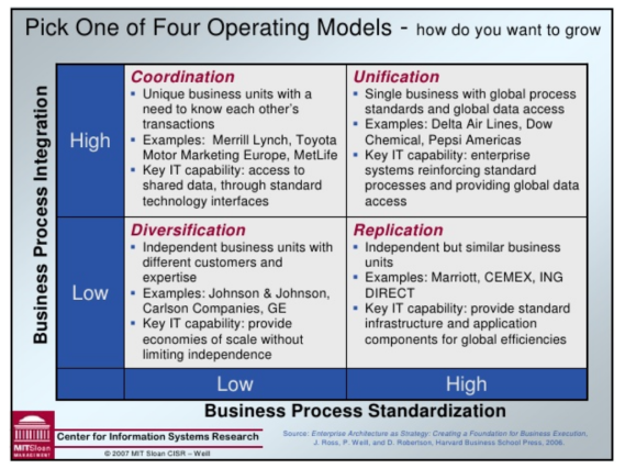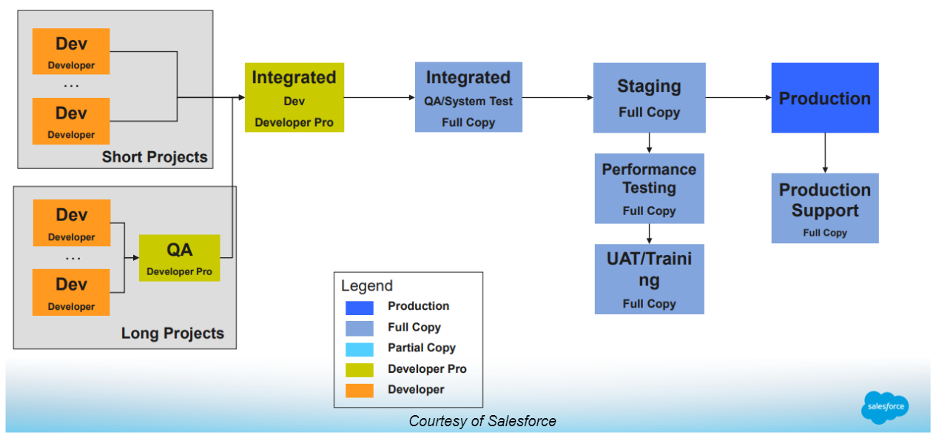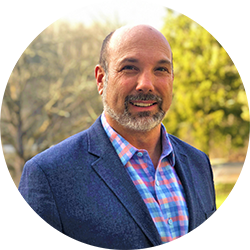How to Ensure a Successful Salesforce Implementation
The reason why companies use Salesforce is to effectively streamline their processes and to profitability grow their customers. However, with Salesforce capabilities so vast it can be all too easy for businesses to either underutilize the system during the Salesforce implementation process or become immobilized by data overload. Without proper governance and system management, user adoption can wither, and the expected value of the system comes far less than expected, if at all.
That is why it is critically important for companies to implement sound practices and policies when it comes to maintaining and managing their Salesforce investment, including an effective change management process, a strategy for how to define and use your Salesforce orgs, and a framework for assuring a high level of technical governance.
This post discusses some key considerations of each topic and tactics that companies can use to maintain a high performing system and be able to adapt and respond to changing business needs and customer expectations.
Implement a Sound Change Management Process
Change Management (CM) is the process of managing the overall program or project lifecycle, from collecting business requirements to moving code from development through production.
Start with a well-defined vision and strategy that identify the overall goals that you are trying to achieve. After establishing your vision and strategy, you must continually initiate and plan various projects that support your program. The platform does some of this in the form of regular Salesforce releases, however, you still have to make these features work for your organization as well as requirements unique to your company.
Once you have established a change management program, you can use the following CM steps to increase your success when implementing change requests for your Salesforce environment.
-
- Collecting Change Request Ideas
- Analyzing & Prioritizing Change Requests
- Configuring, Implementing, & Testing Change Requests
- Developing an End User Communication Strategy
When it comes to managing and prioritizing your product backlog, consider an Agile approach. The Product Backlog is an ordered list of everything that is known to be needed in the product. It is the single source of requirements for any changes to be made to the product. Product backlogs are the fuel that drives the CM process and customers, business users, and system owners all play a part.

Because a sound CM program is about continuous improvement, quality concepts such as Plan-Do-Check-Act (PDCA) cycle is an ideal tool. PDCA is an iterative, four-stage approach for continually improving processes, products or services, and resolving problems. It involves systematically testing possible solutions, assessing the results, and implementing the ones that have shown to work.
Create a Salesforce Org Strategy
In a recent Salesforce article, Greg Cook, Enterprise Architect, indicated one of the most important decisions throughout a company’s Salesforce implementation and overall journey is to decide the company’s “org strategy. His questions form guidance for future maintainability and growth:
Question #1: What is your Enterprise Architecture operating model?
Decisions surrounding the operating model for a Salesforce enterprise architecture are affected by decisions of Process Standardization and Process Integration:
-
- Low Process Integration, Low Process Standardization – Multiple Salesforce org are mostly the case in this situation due to diverse processes and data models. Common support model for services such as User Support and Financial Report and Aggregation.
-
- Low Process Integration, High Process Standardization – While multiple Salesforce orgs are common, there is a need for data replication due to similar business processes and data models. Customer 360 and Master Data Management (MDM) solutions should be considered for data replication, duplication, and enrichment to all orgs.
-
- High Process Integration, Low Process Standardization – Typically this scenario can support multiple Salesforce Orgs given that a high degree of control exists across the orgs and enterprise service delivery (API’s, etc) are well defined. A hub and spoke configuration can be deployed in this model to
-
- High Process Integration, High Process Standardization – The fewer the number of Salesforce orgs, the better. Common business processes and data models are high priorities.

Enterprise Architecture as Strategy (Ross et al.)
Question #2: Who is Paying for all these orgs?
Let’s face it, Salesforce orgs seem to pop up all across larger companies. Coordinating the efforts and driving the company to a consistent Salesforce strategy is a full-time job. A central Center of Excellence should be the main focus on building common lifecycle management processes and preventing redundant or conflicting data models.
Question #3: Are you prepared to deal with the complexity of having multiple LOBs (Lines of Business) inside a single Org?
Companies with user groups that are spread out and diverse (geography, sales, and support processes) place an unusually high demand for single org strategies. The added cost to ensure data is segregated and security models do not break down drives added complexity and cost as org scope increases. Having an eye on current and anticipated differences between lines of business can prevent costly org divestitures.
Define Your Salesforce Technical Governance
One of the most significant challenges when it comes to managing the company’s Salesforce implementation is Technical Governance or lack thereof. There may be a multitude of reason, but these are the most common:
-
- The business unit that purchased Salesforce did not engage its IT resources for guidance on how to administer and manage an enterprise system
- The business unit feels governance will add an unacceptable level of complexity and delays to additional functionality
- Many simply believe changes should be made in production and that a governance model is not necessary.
Governance is accountability, making sure that you, as an organization, with your Center of Excellence are ensuring the future of the hard work you’ve already put into your practice, and helping future enhancements sustain your mission.
A technical governance framework usually includes the following:
-
- CoE (Center of Excellence) – High-level technical and business roadmaps/models used to deliver Salesforce value. Your practice teams are responsible for producing and supporting business roadmaps. A chief architect may be responsible for producing and supporting technical roadmaps used as engagements; NOTE: PM governance is a critical component of the CoE and requires coordination with your business and PMO.
- Design Strategies – Guiding principles for developing the technical aspect of Salesforce. Here are a few areas to consider:
- Clear naming conventions – all custom fields/objects/classes get appended with the 3 digit name of the business unit that made the request
- Defined use of the description field – all description fields will be filled out to include business unit requested, has the name of linkage to any other dependencies
- Class Annotation – All custom classes and triggers will be annotated with plain English explanations of logic and executions
- Documentation – use a standard template and include at least 1 image
- Release Management – Defined procedures, tooling, and processes for Application Lifecycle Management (including Source Control Systems, Continuous Integration, and Automated Testing)

-
- Project Oversight – technical procedures for defining acceptable deliverables in the following areas: Integrations, Data Management, Environments Management, Implementation Best Practices
Closing
The objective of these disciplines is to have a consistent set of repeatable, reliable, and resource-independent processes to achieve optimal business value and optimize resource utilization. Given that most organizations are focused on running shorter, high-yield business projects, it is imperative that the application delivery value chain is optimized to ensure that there are no bottlenecks in delivering the business value.
To learn more about these initiatives, contact us at Roycon Technologies.

Ken Noll
Client Services Director
Ken brings over 20 years of experience in the CRM industry and has spent the last ten working in the Salesforce ecosystem helping customers such as Humana, Camping World, and Bridgestone. Ken's product knowledge spans most of the Salesforce platform, and his expertise is balanced by over a decade of industry experience in manufacturing and healthcare.
About Roycon
We’re an Austin-based Salesforce Consulting Partner, with a passion and belief that the Salesforce platform’s capabilities can help businesses run more efficiently and effectively. Whether you are just getting started with Salesforce or looking to realize its full potential, Roycon specializes in Salesforce Implementations, Salesforce Ongoing Support, and Salesforce Integrations, and Development. We’re the certified partner to guide the way to increase Salesforce Adoption, make strategic decisions, and build your Salesforce Roadmap for success.